Contents
1. What is PoE (Power over Ethernet)?
PoE means "Power over Ethernet" and refers to a technology that powers devices connected to the network through Ethernet cables. It allows devices that require power to be placed in areas where it is difficult to access the power source, without the need for separate power cords, thereby expanding the selection range of installation locations and greatly reducing installation costs.
Without any modifications to the existing Ethernet Cat. 5 cabling infrastructure, while transmitting data signals to some IP-based terminals (such as IP phones, wireless LAN access points AP, network cameras, etc.), it can also provide direct current (DC) power supply technology for such devices.
From the following figure, it can be clearly seen that when the current end belongs to an Ethernet powered switch and the backend belongs to an Ethernet powered load, it significantly reduces the overall installation complexity and cost of materials and power cables.
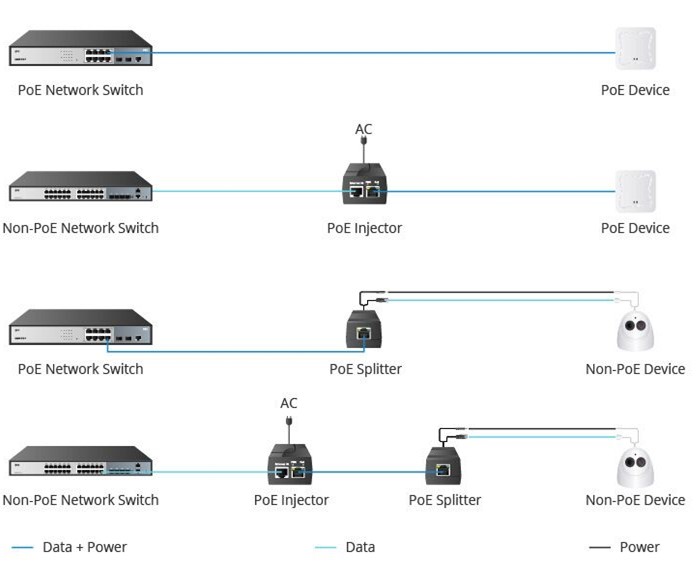 >
>
Image source-FS COMMUNITY "Demystifying PoE Network: Features, Standards, Types, and Common FAQs"
2. The Evolution of PoE
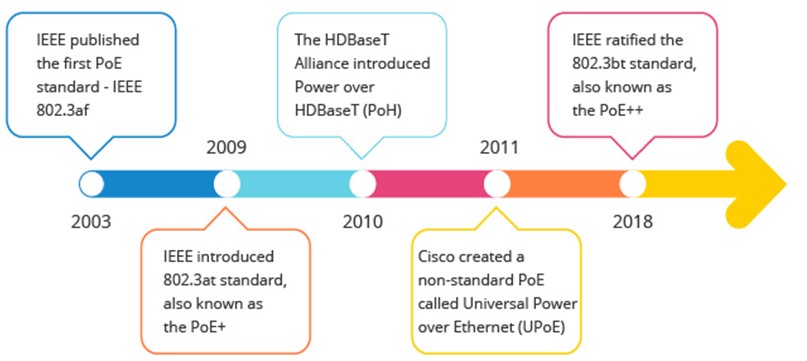
Image source-SMI JAPAN "PoE(Power over Ethernet)向けDC/DCコンバーター"
PoE was first invented to solve the power supply problem of Voice over Internet Phone (VoIP). Traditional telephones can be powered directly from copper wires that transmit voice calls. However, the increasingly popular VoIP is not connected to traditional circuits, but instead make calls through Ethernet cables on the company's local area network (LAN). Ethernet cables do not transmit power, so VoIP must be plugged into the main power supply through an adapter, which is not comprehensive enough because once the building blacks out, the phone will be interrupted.
Telecommunications equipment manufacturer Cisco introduced a self-developed technology in 2000, allowing Ethernet cables to carry 48 V DC to power VoIP phones, becoming the first company to imitate traditional telephone systems .
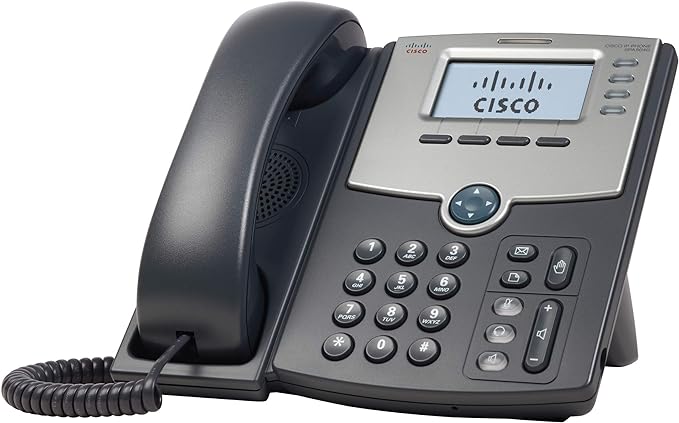
Image source-Cisco VoIP Phone with PoE(source-Cisco)
This technology ultimately caught the attention of IEEE, which was responsible for developing the "Ethernet Standard" (IEEE 802.3) as early as 1983. The organization believes that establishing a standard version of PoE is crucial, so that any manufacturer can bring their products to a "PoE ready" state. This work is handled by a working subcommittee of the IEEE 802.3 Ethernet Committee and named '802.3af'.
IEEE began the development of this standard in 1999, with the earliest participating vendors including 3Com, Intel, PowerDsine, Nortel, Mitel, and National Semiconductor. It was not until June 2003 that the commission of the working group approved the IEEE 802.3af PoE standard. In 2009, the second standard IEEE 802.3at was also approved, defining a similar technology that can handle higher power.
Since the approval of IEEE 802.3at in 2009, engineers have been eager to add new types of PDs with greater power demands, resulting in the continuous development of PoE technology. At the end of 2018, the new version of IEEE 802.3bt PoE standard was approved, which can supply 71.3 W of power to PD while transmitting 90 W from the PSE end.
3. What is the IEEE standard?
The IEEE standard is a set of international standards for electronic technology and electrical engineering developed by the Institute of Electrical and Electronics Engineers (IEEE). The existence of these standards is to ensure the correct, safe, and interchangeable operation of equipment and systems.
- IEEE 802.3af(PoE)-The maximum power supply is 15.4 watts.
- IEEE 802.3at(PoE+)-The maximum power supply is 30 watts.
- IEEE 802.3bt (PoE++)-The maximum power supply is 60 (Type 3) or 100 watts (Type 4).
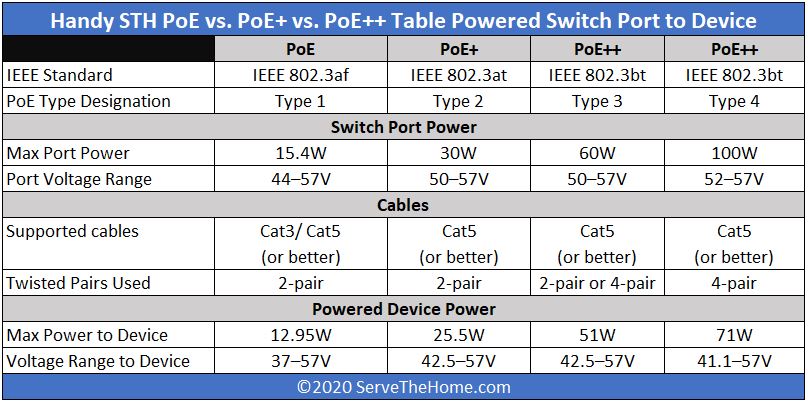
Image source-STH FORUMS "Key Differences of PoE vs PoE+ vs PoE++ Switches a STH Guide"
Initially, PoE was developed to power low-power devices such as VoIP and wireless access points. However, as society becomes more digital, more devices require network connectivity, and their power consumption also increases.
The development of the Internet of Things (IoT) has generated many scenarios where sensors and actuators are connected to the network. Providing separate power to these devices can be inefficient or technically challenging in some cases. In addition, new network devices such as high-resolution surveillance cameras and access points to the new generation Wi-Fi standard now require more power than traditional PoE standards can provide.
The increase in demand, coupled with the need for a new standard to significantly increase PoE's capabilities, led to the emergence of the IEEE 802.3bt standard, which allows data and power to be transmitted simultaneously through a single cable, greatly reducing the complexity of wiring and lowering installation and operating costs. It also makes it possible to manage power from a central location, improving energy efficiency and achieving remote power management. The following figure shows different PoE standards corresponding to different terminal load devices.
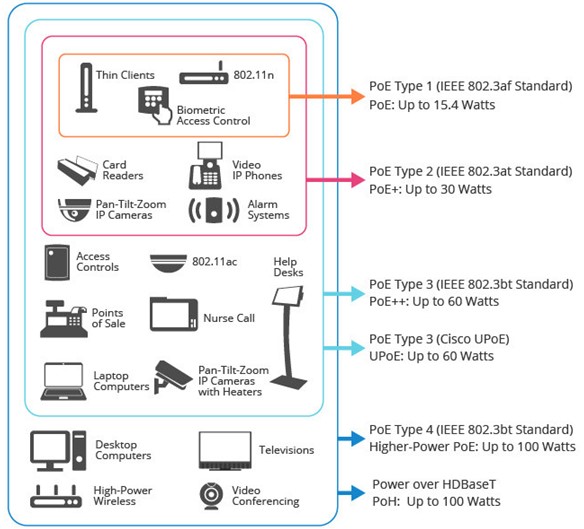
Image source-STH FORUMS "Key Differences of PoE vs PoE+ vs PoE++ Switches a STH Guide"
4. Suggested DC/DC converters suitable for PoE applications
The PoE standard (IEEE 802.3) specifies the maximum power that can be provided and the voltage level that can be transmitted; PoE++makes it possible to provide up to nearly 100W of power to devices through Ethernet cables. The device can be placed anywhere within the maximum cable length (100 meters). However, long-distance power transmission involves voltage drop. To compensate for this and improve the efficiency of the power supply, PoE usually uses a higher voltage of 48V (PoE+is 54V). This is because higher voltages reduce losses in power transmission, ensuring that the equipment has sufficient power over long distances. Even if there is a loss during power transmission, it can ensure the voltage required for the final operation of the equipment.
The MKZI40, MRZI100, and MRZI150 series of MINMAX are high-performance isolated DC-DC converters designed specifically for railway. These series are packaged in a universal 2 "x1" or 1/4 brick geometry, with maximum output power ranging from 40W to 150W. Their input voltage range is 36-160 VDC, which is common in railway applications, and can also achieve constant voltage starting at 36 VDC voltage. In addition, the output voltage can be selected from 5 V, 12 V, 15 V, 24 V, and 54 V (± 12 V and ± 15 V for MKZI40), with 54 V output voltage particularly suitable for PoE applications.
The above series adopts the most advanced circuit topology structure, with an efficiency of up to 90%. They have stable performance and can maintain overall efficiency even with sudden changes in input and output voltage and ambient temperature. They can also meet 100% of the system load and power requirements at startup, quickly providing rated input voltage and meeting the optimized system load and drive power requirements.
These series also have excellent insulation performance, with high isolation voltages from 2000VAC to 3000VAC and reinforced insulation systems, effectively preventing terminal system damage and personal injury caused by lightning strikes. Further fault protection functions include input voltage protection, output overcurrent protection, output short circuit protection, output overvoltage protection, and over temperature protection, which can immediately protect the power module itself and terminal system in the event of a fault. In addition, they support operation in high altitude areas of 5000 meters and have been certified to the railway standard EN50155 (IEC60571), fire testing standards, and safety standards IEC/EN/UL62368-1.
For the above reasons, the MKZI40, MRZI100, and MRZI150 series of MINMAX can play an important role as ideal power solutions for any PoE application due to their reliability, efficiency, and safety.
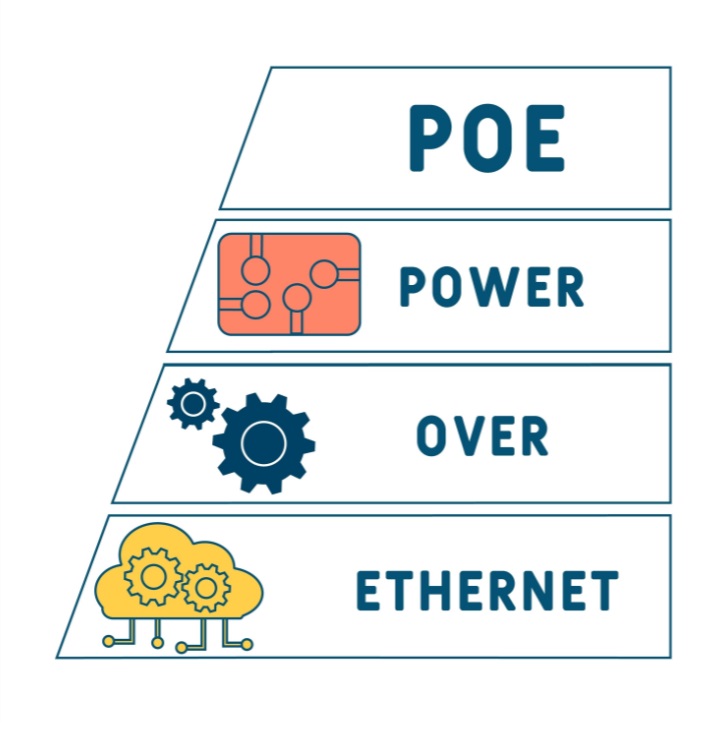
Image source-SMI JAPAN "PoE(Power over Ethernet)向けDC/DCコンバーター"
For more Technical Articles>>>
For more information,please click on the following links
- 【MINMAX Railway Certified Products _ Power Solutions】
- 【MINMAX Railway Certified Products _ Product Selection Guidebook】
- 【MINMAX Railway Certified Product _Product Introduction Video】
- 【MINMAX Railway Certified Series _ Quarter Brick_MRZI150 Series】
- 【MINMAX Railway Certified Series _ 2" x 1"_MKZI40 Series】
- 【MINMAX Railway Certified Series _ DIP-24_MIZI03 Series】
